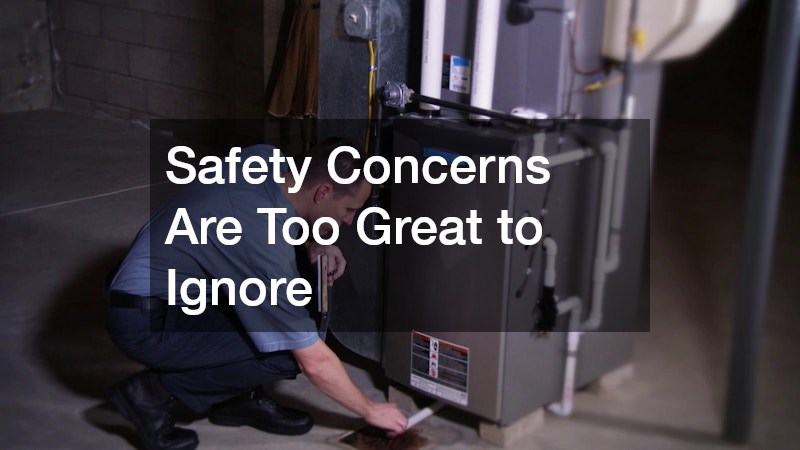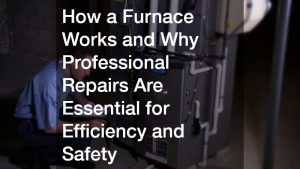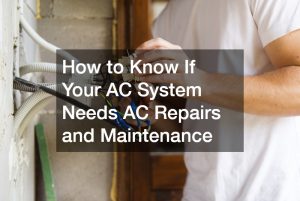When the temperature drops, your furnace becomes one of the most important systems in your home. It not only keeps your living space warm but also ensures comfort, safety, and indoor air quality during the colder months. But while many homeowners rely on their furnace daily, few understand how it works or why professional furnace repair is crucial when issues arise.
Understanding How a Furnace Works
A furnace is a central component of your home’s HVAC (heating, ventilation, and air conditioning) system. It works by drawing in air, heating it, and distributing the warm air throughout your home using ductwork.
While there are several types of furnaces—gas, electric, oil, and propane—the basic process of heating is similar across most models.
-
Thermostat Signals a Need for Heat
When your home’s indoor temperature falls below the set level on your thermostat, it sends a signal to the furnace to begin a heating cycle. -
Ignition and Burner Activation
In gas and oil furnaces, the fuel is ignited either through a pilot light or electronic ignition. Electric furnaces use heating elements. Once ignited, the burner produces heat in a combustion chamber. -
Heat Exchanger Warms the Air
The heat generated from the burner passes through the heat exchanger. This is a metal chamber that warms up and transfers that heat to the surrounding air without allowing harmful combustion gases to mix with the air being circulated in your home. -
Blower Fan Pushes Heated Air Through Ducts
A blower motor activates and circulates the newly warmed air through the duct system and into various rooms of the home. -
Exhaust Is Safely Vented
Combustion gases created during the process are expelled from the furnace through a flue or vent, ensuring indoor air quality and safety. -
System Cycles Off
Once the thermostat senses that the desired indoor temperature is reached, it signals the furnace to shut off until more heat is needed.
Why Furnace Repair Should Be Left to Professionals
Modern furnaces are complex systems with electrical, mechanical, and combustible components. Even minor issues can affect performance, efficiency, and safety. Attempting to diagnose or fix a problem without professional training can lead to dangerous consequences and costly damage.
1. Safety Concerns Are Too Great to Ignore
A malfunctioning furnace can be a serious safety risk. Gas leaks, carbon monoxide exposure, or electrical failures can put your household in danger. Professionals are trained to detect and fix these issues while following strict safety protocols.
Even something that seems small—like a strange smell or an odd noise—could indicate a more serious underlying problem, such as a cracked heat exchanger or a clogged burner. These are not issues that should be approached with guesswork.
2. Proper Diagnosis Requires Advanced Tools and Knowledge
Furnace systems include a range of parts like heat exchangers, flame sensors, limit switches, blowers, and thermostats. Determining the root cause of a problem often requires specialized tools and a deep understanding of HVAC systems.
Without proper training, you might replace a part that isn’t actually broken, overlook a critical safety component, or make adjustments that cause more harm than good. An experienced technician can quickly assess the issue and apply the correct fix the first time.
3. Timely Repairs Preserve Efficiency and Lifespan
A furnace that isn’t functioning correctly may still run, but it won’t perform efficiently. For example, a clogged air filter or dirty burner may cause the system to overwork, driving up your energy use and wearing down parts prematurely.
Regular maintenance and timely repairs from a qualified professional ensure your furnace runs efficiently, which in turn prolongs its operational life. Ignoring small issues can lead to bigger, more expensive problems down the line.
4. Warranty and Insurance May Be Voided by DIY Repairs
Many furnace manufacturers include clauses in their warranties that require repairs and maintenance to be completed by licensed professionals. If you attempt a repair yourself and something goes wrong, you could void your warranty and be responsible for the full cost of replacement or further damage.
Additionally, if an unlicensed repair leads to damage or a fire, your homeowner’s insurance may not cover the resulting damage. Professional furnace repair ensures you stay compliant with warranty and insurance terms.
5. Professionals Help with Preventive Maintenance
When you hire a qualified technician, you’re not just fixing what’s broken—they’ll also inspect the rest of the system. Preventative maintenance, like cleaning, lubricating parts, checking air flow, and testing electrical components, can prevent future breakdowns.
This level of service ensures peace of mind throughout the heating season. You’ll know that your furnace is operating at peak performance and that minor issues have been addressed before they turn into bigger problems.
Your furnace is a complex system that plays a vital role in keeping your home comfortable and safe. Understanding how it works is important, but knowing when to step back and call in a pro is even more critical. Whether it’s a worn-out component, a strange noise, or a lack of airflow, scheduling a furnace repair with a licensed technician is the smartest move you can make.
Avoid the risks of DIY fixes and trust a trained professional to protect your system, your home, and your peace of mind all winter long.




